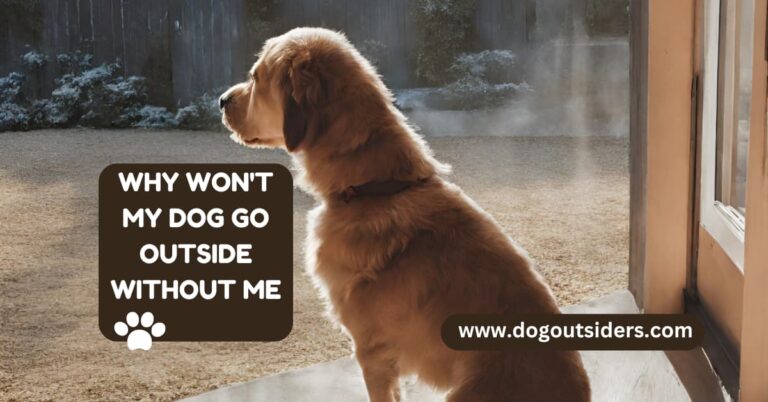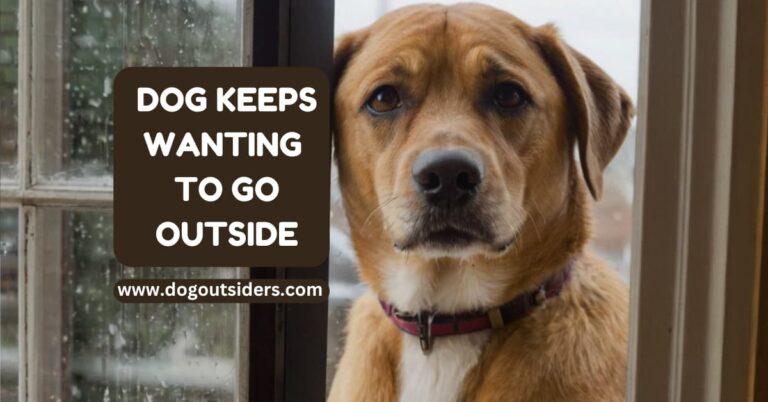Did you know that over 50% of dog owners allow their furry friends to sleep outside? While it may seem like a common practice, there are important considerations to keep in mind. As a dog lover myself, I understand the desire for our pets to enjoy the outdoors, but safety and comfort should always come first. When thinking about whether dogs can sleep outside, factors such as temperature, shelter, and security play a crucial role. Let’s join me to discuss the topic: Can dogs sleep outside, and what are the benefits and risks involved? Remember, your pup’s well-being is a top priority!
Key Takeaways
- Consider Your Dog’s Needs: Before letting your dog sleep outside, assess their breed, age, health, and comfort level to ensure it is suitable for them.
- Create a Safe and Comfortable Environment: To keep your outdoor dog cozy and secure, choose a sheltered, dry area with adequate bedding and protection from extreme temperatures.
- Monitor Temperature Conditions: Be mindful of weather changes and provide appropriate shelter, blankets, or cooling options to keep your dog comfortable in all seasons.
- Prioritize Interaction and Companionship: Dogs are social animals; make sure they have regular human interaction, playtime, and mental stimulation to prevent loneliness and boredom.
- Provide Essential Supplies: Provide food, water, toys, and a comfortable resting area outdoors to meet your dog’s basic needs and promote a healthy lifestyle.
- Supervise and Ensure Safety: Regularly check on your outdoor dog, secure the area to prevent escapes or hazards, and address any potential risks promptly to keep them safe and happy.
Can Dogs Sleep Outside?
Yes, dogs can sleep outside under certain conditions. It is essential to provide them with adequate shelter, such as a doghouse or insulated area, to protect them from extreme weather conditions. Make sure they have access to fresh water and a comfortable sleeping area. Additionally, monitor the temperature and bring them indoors if it gets too cold or hot. Some breeds may be more suited to sleeping outside than others, so consider your dog’s individual needs and preferences. Overall, with proper care and attention, dogs can safely sleep outside.
The Debate on Outdoor Sleeping

Pros and Cons
Sleeping outside can offer increased independence for dogs, allowing them to explore their surroundings freely. This outdoor experience promotes better mental stimulation for the dog, especially in larger spaces. However, one major drawback is the potential exposure to harsh weather conditions, leading to health issues like hypothermia or heatstroke.
When considering letting dogs sleep outdoors, it’s essential to weigh the benefits against the risks. While outdoor sleeping can encourage natural behaviors such as hunting instincts and territorial marking, it also exposes dogs to dangers like predators or accidents. Providing a comfortable and safe outdoor sleeping area is crucial to mitigate these risks.
Misconceptions Addressed
One common misconception about outdoor sleeping for dogs is that all breeds are suited for it. In reality, factors like coat type and size play a significant role in determining a dog’s tolerance to outdoor conditions. Contrary to popular belief, not all dogs enjoy sleeping outside; some may feel anxious or insecure without their owners nearby.
Another myth is that outdoor sleeping always leads to a healthier lifestyle for dogs. While fresh air and exercise are beneficial, inadequate shelter or exposure to extreme temperatures can have adverse effects on a dog’s well-being. Proper supervision and regular health check-ups are crucial when opting for outdoor sleeping arrangements.
Cultural and Historical Perspectives
Culturally, some societies have embraced the practice of dogs sleeping outdoors as a tradition passed down through generations. In certain regions, dogs are considered guardians of the household and are expected to stay outdoors for security reasons. These cultural beliefs shape attitudes toward outdoor sleeping practices for dogs.
Historically, dogs have been domesticated for various purposes, including guarding livestock or assisting in hunting activities. This historical context influences how dogs interact with their environment today. Understanding these historical roles sheds light on why some dog owners prefer outdoor sleeping arrangements for their pets.
Factors to Consider for Outdoor Dogs
Breed Suitability
Certain dog breeds are better suited for sleeping outside due to their thick coats and high tolerance to different weather conditions. Breeds like Siberian Huskies and Alaskan Malamutes are more adapted to outdoor living.
When considering whether a dog can sleep outside, it’s crucial to consider the breed’s natural tendencies. For example, working dogs such as Border Collies may thrive in outdoor environments, while toy breeds like Chihuahuas might struggle.
Age and Health Conditions
The age of the dog plays a significant role in determining whether they can sleep outside. Puppies, elderly dogs, or those with certain health conditions may not be suitable for outdoor sleeping due to their vulnerability to extreme temperatures.
It’s important to consult with a veterinarian before deciding if your dog can sleep outdoors, especially if they have any underlying health issues. Older dogs may need help with regulating their body temperature effectively, making them less suitable for outdoor living.
Behavior and Temperament
The behavior and temperament of a dog are crucial factors when considering outdoor sleeping arrangements. Dogs that are anxious or easily stressed may not feel comfortable sleeping outside and may exhibit behavioral issues as a result.
A dog’s temperament also plays a role in how they perceive their outdoor environment. Some dogs may enjoy the freedom and space that outdoor sleeping provides, while others may prefer the comfort and security of being indoors.
In my experience, providing adequate shelter and comfortable bedding can significantly affect a dog’s adaptation to sleeping outside. Incorporating familiar scents or toys in their outdoor sleeping area can also help them feel more at ease.
Choosing the Right Spot for Nighttime Rest

Safe and Comfortable Area
Ensuring dogs sleep outside in a safe and comfortable spot is crucial for their well-being. Creating a designated sleeping area helps establish a routine and sense of security for your furry friend.
Consider placing a cozy dog bed in a sheltered location to protect them from harsh weather conditions. Providing adequate bedding can offer insulation and cushioning, promoting better sleep quality.
Impact of Noise and Light Levels
Excessive noise and bright lights can disrupt a dog’s sleep, leading to restlessness and anxiety. Selecting a quiet corner away from loud disturbances is essential for promoting uninterrupted sleep.
Avoid positioning the sleeping area near sources of light pollution, such as street lamps or bright outdoor fixtures. Opt for dim lighting or use curtains to create a darker environment conducive to relaxation.
Creating a Calming Environment
To enhance your dog’s outdoor sleeping experience, incorporate soothing elements into their bedtime routine. Introduce calming scents like lavender or chamomile to promote relaxation and reduce stress levels.
Play soft music or white noise to drown out external sounds and create a tranquil atmosphere for your pet. Establishing a consistent bedtime schedule can also help regulate their sleep patterns.
Setting up a small tent or canopy can provide additional protection from the elements while giving your dog a cozy space to rest. Using natural materials like straw or hay as bedding can offer warmth and comfort during colder nights.
Ensuring Safety and Comfort Outdoors

Shelter Setup
When dogs sleep outside, it’s crucial to provide them with a proper shelter. This shelter should offer protection from rain, wind, and extreme temperatures. A dog house or insulated shelter can serve as a cozy retreat for your furry friend.
To make the outdoor sleeping area inviting, consider adding soft bedding like blankets or a pet bed. This will not only keep your dog warm but also provide a comfortable surface for them to rest on. Placing familiar items, such as their favorite toy, inside the shelter can help them feel more at ease.
Weather Considerations
In colder climates, you may need to add extra insulation to the shelter to keep your dog warm during the night. This could include using heating pads designed for pets or providing additional blankets. On hot summer nights, ensure there is proper ventilation in the shelter to prevent overheating.
During stormy weather, it’s important to secure the shelter properly to prevent it from getting damaged or harming your dog. Position the shelter away from areas that are prone to flooding or strong winds. Providing a raised platform for the shelter can also help keep it dry during rainy days.
Safety Precautions
It is essential to create a safe environment for your dog while it sleeps outside. Make sure the outdoor area is securely fenced to prevent your dog from wandering off or encountering potential dangers. Check the area for hazardous items such as sharp objects or toxic plants.
Consider installing motion-activated lights around the sleeping area at night to deter unwanted visitors and predators. Regularly inspect the outdoor space for any signs of wildlife activity that could threaten your dog’s safety.
Temperature Needs for Dogs Sleeping Outside
Monitoring Fluctuations
Dogs sleeping outside require careful monitoring of temperature fluctuations to ensure their safety and well-being. Sudden drops in temperature can pose a significant risk to their health. Keeping a close eye on weather forecasts and adjusting their sleeping arrangements accordingly is crucial.
Keeping Warm or Cool
During cold nights, it’s essential to provide adequate insulation for your outdoor sleeping dog. This could include a cozy dog house with blankets or heating pads. On the flip side, on hot days, ensure your dog has access to shade and plenty of water to prevent overheating.
Risks of Extreme Temperatures
Extreme temperatures can have severe consequences for dogs sleeping outside, leading to hypothermia in cold weather or heatstroke in hot weather. It’s vital to be aware of the signs of these conditions and take immediate action if you notice any symptoms in your furry friend.
Importance of Companionship and Interaction
Socialization Benefits
Dogs are social animals, craving companionship and interaction for their overall well-being. Interacting with other animals or humans can fulfill their need for socialization.
As pack animals, dogs thrive on social bonds and connections with others. Being around other dogs or engaging with humans can provide mental stimulation and prevent loneliness.
Tips to Prevent Loneliness
- Ensure your dog has regular playdates with other friendly dogs.
- Take your dog to obedience classes or dog parks for socialization opportunities.
- Engage in interactive play sessions to keep your dog mentally stimulated.
- Provide toys and puzzles that encourage independent play when alone.
When my dog was sleeping outside, I made sure to spend quality time playing games like fetch or going for walks together. These activities helped strengthen our bond and kept my furry friend happy.
Human Interaction Importance
Human interaction is crucial for dogs sleeping outside. Spending time with their human family members helps them feel loved and secure.
Ensuring that your dog receives attention, affection, and physical touch from humans is essential for their emotional well-being. This bond strengthens the relationship between you and your pet.
Personal Experience
I found that spending time training my dog outdoors not only helped him learn new commands but also provided an opportunity for bonding. Training sessions were a great way to interact positively while ensuring mental stimulation.
Providing Essentials Outdoors
Shelter
When dogs sleep outside, a suitable shelter is crucial to protect them from harsh weather conditions. A dog house or kennel should be well-insulated and elevated off the ground to keep them warm and dry.
Bedding
Providing bedding in the outdoor sleeping area is essential for dogs’ comfort. Use blankets or mats that are easy to clean and maintain, ensuring a cozy and warm resting place for your furry friend.
I remember when I first set up an outdoor sleeping area for my dog. I made sure to include a comfortable bed with blankets that could be easily washed. It’s important to consider your dog’s comfort and warmth, especially during colder nights.
Access to Water and Food
Ensuring dogs sleeping outside have access to fresh water at all times is critical. Hydration is key for their well-being, especially during hot weather. Providing regular access to food will keep them nourished and satisfied.
Hygiene Maintenance
Maintaining hygiene in the outdoor sleeping space is essential to preventing health issues. Clean the area regularly, remove any waste promptly, and wash bedding regularly to ensure a clean environment for your dog.
When setting up my dog’s outdoor sleeping area, I made sure to establish a routine for cleaning and disinfecting the space regularly. This not only kept my dog healthy but also prevented any unwanted pests from invading the area.
Creating a Stimulating Outdoor Environment
Mental Stimulation
Dogs sleeping outside benefit from mental stimulation, which keeps them engaged and prevents boredom. This is crucial for their overall well-being.
Toys and Activities Incorporate interactive toys such as treat dispensers or puzzle games to keep dogs entertained. These toys engage their minds and provide mental exercise.
Sensory-Rich Environment
Create a sensory-rich environment by including different textures, scents, and sounds for dogs to explore. This stimulates their senses and provides enrichment.
When setting up the outdoor space for your dog, consider adding various textures such as grass, sand, or gravel for them to walk on. These textures offer sensory stimulation and enhance the outdoor experience.
Introducing different scents, like fresh herbs or flowers, can also engage your dog’s sense of smell. Scatter these scents around the outdoor area to create an enriching olfactory experience for your furry friend.
Incorporating sounds into the outdoor environment can further stimulate your dog. You can play calming music, or nature sounds to create a soothing atmosphere that enhances relaxation during sleep time.
Supervision and Safety Tips
Regular Supervision
Regular supervision is crucial when allowing dogs to sleep outside. By keeping an eye on them, owners can ensure their safety and well-being. I always make sure to check on my dog periodically when he’s outdoors.
Safety Measures
Implementing safety measures is essential to prevent escapes or unwanted encounters with wildlife. Secure fences and gates can help contain the dog within the outdoor area. I also make sure to remove any toxic plants or substances that could harm my dog.
Potential Risks
Owners should be aware of potential risks associated with outdoor sleeping for dogs. Weather conditions like extreme heat or cold can pose a threat to their health. I always provide a comfortable shelter for my dog to protect him from harsh weather.
Wildlife Encounters
Preventing wildlife encounters is vital for the safety of outdoor dogs. Avoid leaving food outside, as it can attract unwanted animals. I ensure that my dog is always supervised, especially during dawn and dusk when wildlife is more active.
Escape Prevention
To prevent escapes, it’s important to secure all exits and entrances properly. Regularly check fences for any gaps or weak spots that the dog could exploit. I always double-check the gates and fences before letting my dog out.
Conclusion:
After weighing the pros and cons, it’s clear that allowing dogs to sleep outside can be a viable option, provided that their safety and well-being are prioritized. Factors like temperature, companionship, and a stimulating environment play crucial roles in ensuring their comfort. Choosing the right spot and providing essentials are essential steps in creating a conducive outdoor sleeping area for our furry friends. Supervision and safety precautions are paramount to guarantee their security throughout the night.
To provide the best care for outdoor sleeping dogs, remember to regularly check on them, offer love and attention, and create a cozy space tailored to their needs. By following these guidelines, you can ensure that your canine companion enjoys a safe and comfortable outdoor sleeping experience.
FAQ’s:
Dogs can sleep outside year-round if provided with adequate shelter, bedding, and protection from extreme weather conditions. Monitor the temperature closely and ensure your dog has a cozy and safe outdoor sleeping area.
Select a spot that is sheltered from wind, rain, and direct sunlight. Ensure it’s clean, dry, and away from potential hazards. Consider providing a comfortable bed or blanket for your dog to rest on.
Leaving your dog outside at night can be safe if you provide proper supervision and a secure environment. Ensure your dog has access to water and shelter and is protected from any potential dangers in the area.
Essentials include:
A comfortable bed or blanket.
Freshwater.
Appropriate shelter.
Food if necessary.
Regular health check-ups.
Please keep your dog’s outdoor area clean and free of hazards to ensure their safety and well-being.
Provide your dog with insulated bedding or blankets and a heated shelter if needed, and monitor the temperature regularly. Consider using heat pads designed for pets, but ensure they are safe and suitable for outdoor use.







Good web site! I really love how it is easy on my eyes and the data are well written I’m wondering how I could be notified whenever a new post has been made I have subscribed to your feed which must do the trick! Have a nice day!